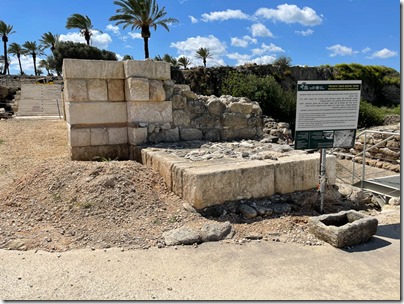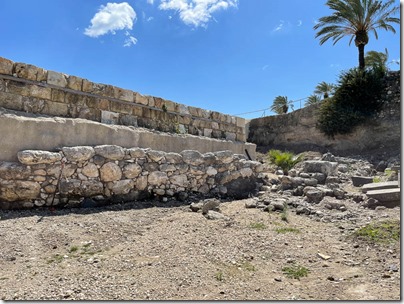The Iron Age gate at Megiddo often associated with Solomon has been reconstructed. This is particularly helpful because the Chicago expedition in the 1930s had completely removed one side of the gatehouse, making it difficult for visitors to visualize.
The following photos are provided courtesy of the Jezreel Valley Regional Project. A recent article on this gate and its predecessors and successors was published in 2019 by the Tel Aviv journal: “The Iron Age Gates of Megiddo: New Evidence and Updated Interpretations,” by Israel Finkelstein, Matthew J. Adams, Erin Hall, and Eythan Levy.
The sign in front of the gate reads as follows:
Reconstruction of the Israelite Gate.
The Israel Nature and Parks Authority and the Israel Antiquities Authority have begun reconstruction of the gate from the time of the kings of Israel.
During the 1930s the western part of the gate was removed by the University of Chicago expedition in order to excavate beneath it.
We are currently reconstructing the gate and restoring it to its previous condition. After reconstruction is complete visitors will pass through the ancient gate on their way to tour the site.
The work is expected to take eight months.
We apologize for the temporary inconvenience and ask that you walk carefully on the authorized path.



